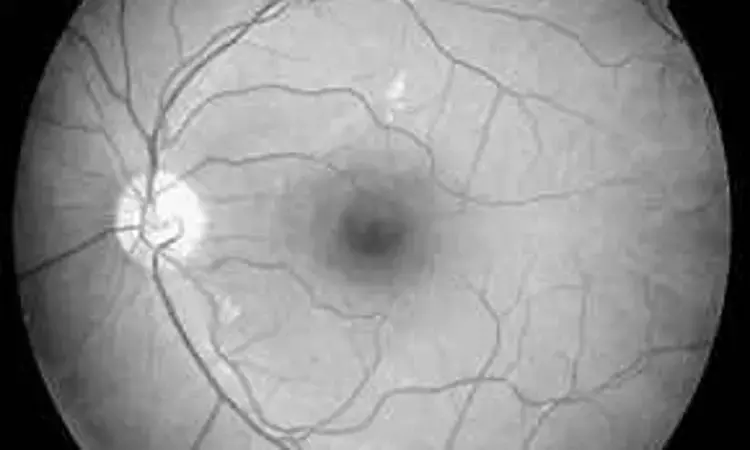- Home
- Medical news & Guidelines
- Anesthesiology
- Cardiology and CTVS
- Critical Care
- Dentistry
- Dermatology
- Diabetes and Endocrinology
- ENT
- Gastroenterology
- Medicine
- Nephrology
- Neurology
- Obstretics-Gynaecology
- Oncology
- Ophthalmology
- Orthopaedics
- Pediatrics-Neonatology
- Psychiatry
- Pulmonology
- Radiology
- Surgery
- Urology
- Laboratory Medicine
- Diet
- Nursing
- Paramedical
- Physiotherapy
- Health news
- Fact Check
- Bone Health Fact Check
- Brain Health Fact Check
- Cancer Related Fact Check
- Child Care Fact Check
- Dental and oral health fact check
- Diabetes and metabolic health fact check
- Diet and Nutrition Fact Check
- Eye and ENT Care Fact Check
- Fitness fact check
- Gut health fact check
- Heart health fact check
- Kidney health fact check
- Medical education fact check
- Men's health fact check
- Respiratory fact check
- Skin and hair care fact check
- Vaccine and Immunization fact check
- Women's health fact check
- AYUSH
- State News
- Andaman and Nicobar Islands
- Andhra Pradesh
- Arunachal Pradesh
- Assam
- Bihar
- Chandigarh
- Chattisgarh
- Dadra and Nagar Haveli
- Daman and Diu
- Delhi
- Goa
- Gujarat
- Haryana
- Himachal Pradesh
- Jammu & Kashmir
- Jharkhand
- Karnataka
- Kerala
- Ladakh
- Lakshadweep
- Madhya Pradesh
- Maharashtra
- Manipur
- Meghalaya
- Mizoram
- Nagaland
- Odisha
- Puducherry
- Punjab
- Rajasthan
- Sikkim
- Tamil Nadu
- Telangana
- Tripura
- Uttar Pradesh
- Uttrakhand
- West Bengal
- Medical Education
- Industry
Ring Amplitude and its effects on Diabetic eyes - A Multifocal electro retinography study

New research published in the journal "Seminars in Ophthalmology,2022" found that diabetes affects the central rings more than the peripheral rings and the effects are unevenly distributed on the retinal topography.
Diabetic Retinopathy is an ocular complication of diabetes, a metabolic disorder affecting a huge population worldwide. If left untreated this disease can reduce vision leading to blindness. Researchers from Turkey conducted a study to evaluate the ring amplitudes in diabetic patients, the effect of the risk factors for diabetic retinopathy on the ring amplitudes, and the success of ring amplitudes in classifying diabetic retinopathy.
The study included 32 eyes of 32 diabetic patients without retinopathy (DM), 34 eyes of 34 patients with mild non-proliferative diabetic retinopathy (NPDR) without macular edema, and 62 eyes of 62 age- and sex-matched controls (CG). Evaluation of all the patients was done using Multifocal Electroretinography (mfERG). Parameters like the relationship between age, diabetes duration, HbA1c and ring amplitudes, and the effect of diabetes and hypertension on ring amplitudes were evaluated. The discrimination power of the ring amplitudes was evaluated by a three-way ROC analysis.
Results:
- In the comparison of the ring amplitudes, the amplitudes of the DM and NPDR groups were statistically significantly decreased compared to the CG (p < .05).
- A moderate to strong correlation was found between the duration of diabetes, HbA1c, and ring amplitudes (p < .05).
- The effect of diabetes decreased towards the peripheral rings and hypertension did not affect ring amplitudes.
Thus, the researchers concluded that in multifocal ERG it was found that Diabetes affects the central rings more than peripheral rings and the effects of diabetes are unevenly distributed on the retinal topographically. They further added that the effective ways to identify early changes in retinal function are the ring densities and ring ratios.
To read the full article, click here: https://doi.org/10.1080/08820538.2022.2100714
Sener H, Gulmez Sevim D, Erkilic K, Oner A, Gunay Sener AB. Evaluation of Ring Amplitude and Factors Affecting Ring Amplitude in Multifocal Electroretinography in Diabetic Eyes [published online ahead of print, 2022 Jul 14]. Semin Ophthalmol. 2022;1-7.
BDS, MDS
Dr.Niharika Harsha B (BDS,MDS) completed her BDS from Govt Dental College, Hyderabad and MDS from Dr.NTR University of health sciences(Now Kaloji Rao University). She has 4 years of private dental practice and worked for 2 years as Consultant Oral Radiologist at a Dental Imaging Centre in Hyderabad. She worked as Research Assistant and scientific writer in the development of Oral Anti cancer screening device with her seniors. She has a deep intriguing wish in writing highly engaging, captivating and informative medical content for a wider audience. She can be contacted at editorial@medicaldialogues.in.
Dr Kamal Kant Kohli-MBBS, DTCD- a chest specialist with more than 30 years of practice and a flair for writing clinical articles, Dr Kamal Kant Kohli joined Medical Dialogues as a Chief Editor of Medical News. Besides writing articles, as an editor, he proofreads and verifies all the medical content published on Medical Dialogues including those coming from journals, studies,medical conferences,guidelines etc. Email: drkohli@medicaldialogues.in. Contact no. 011-43720751




